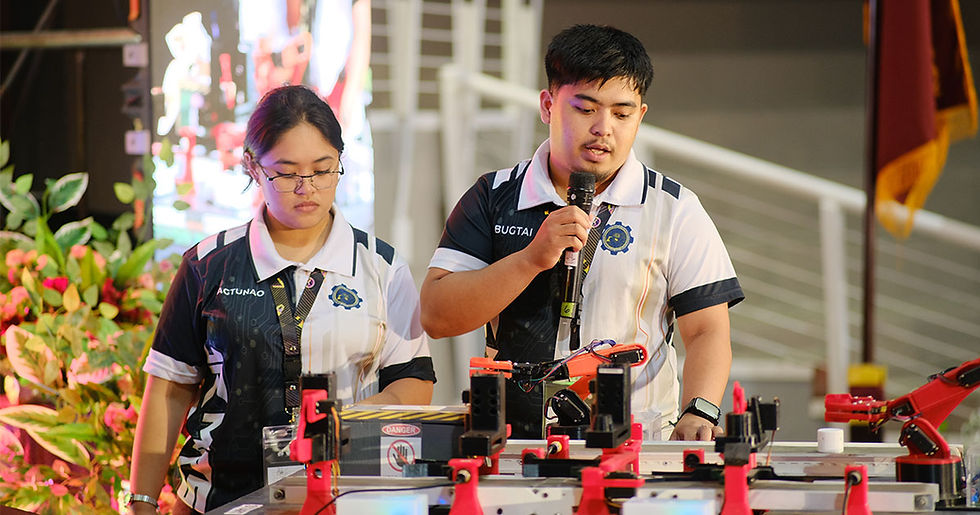‘Better’ Results are a Key Part of Field Ready’s Approach
- Field Ready

- May 3, 2017
- 4 min read
An essential set of goals for any innovative endeavor is ‘cheaper, faster, better.’ But how these goals can be measured and evaluated is a common question. To start, ‘cheaper’ is measurable because it is possible to compare at local and international markets. ‘Faster’ is also measurable; we find out how long it would take to order items by traditional means.
‘Better,’ however, is subjective and might not always be possible or practical to measure. How do we know when something is ‘better’? This post, and the several that follow, explains our current approach to answering this question and details the approach we use in our formal risk, safety and evaluation work.
What counts as ‘better’ in a humanitarian, reconstruction or development context?
At the basic level, ‘better’ means an improvement on what currently exists. It may sometimes imply ‘excellent’ but this is present in a minority of cases so it can also mean that it is no longer the worst case (e.g., think of ‘getting better’ after an illness or injury
During a disaster and its aftermath, too often the case is that people have to do without or have products and services that are sub-optimal. Very often they are dealing with the worst case.
So ‘better’ in this context is significant in that it allows for experimentation and the achievement of multiple iterations. Better means that it is more easily repaired and is replicatable. The product or service is close to design which provides a number of advantages when it solving people’s real needs. In this sense, it readily facilitates human centered design and participatory development techniques. Being better may also increase the opportunities for recycling/upcycling which has cost and environmental advantages.
What process is followed to make things ‘better’?

First, with a team of experts and experienced professionals, it’s important that we can say ourselves that an item we’ve made is better. That’s part of the motivation and profession of being makers, designers and engineers. It is one of our most basic ethical duties as Field Ready. The Hippocratic Oath of ‘do no harm’ extends to relief workers. Field Ready’s teams do not make things worse – we make things better. We don’t make rubbish (something we often tell potential partners who may be worried about the quality of locally made goods). Our approach to quality applies even in projects where we make items from rubbish collected from the streets – something we do as part of our response to the Syrian crisis.
Second, we ask: better for who? When we know who we’re really talking about, we can then ask them whether something we’ve made is ‘better’. As a minor point, we are happy with subjective judgements of ‘better’ for low-risk items. We actively seek out these subjective judgements from partners and end-users. They know it when you see it.
For instance, in Nepal, we helped repair a warmer at a local hospital. We asked the hospital engineers rather than the nurses or the parents of the babies, because they were the ones who knew the problem and all the different factors/constraints best and who were being forced to improvise their own solutions in the absence of supply chains – so they also knew the problems with attempted solutions.
Finally, when we develop, manage and support testing designs for higher-risk items. In general, for a medical item, better equals safer, which isn't subjective if the primary risks are known and true for more industrial items, especially where strength matters. Field Ready’s regimes might range from experiments on samples, advice or review from independent experts or testing against international standards. We engage others (including ‘the crowd’) to give us feedback. We’re very keen on supporting others to use our designs and to feed back to us on our documentation.
Next Steps
Our engineering teams are working on a guide for assessing the risks that may apply to an item and the appropriate level of feedback and testing needed to mitigate those risks. With this guide, we’ll be better at being sure that what we make really is ‘better’. When we’re happy that it’s helpful, we’ll share it openly.
We also need to gently challenge others on some of their attitudes and practices:
Requiring the highest international standards for some items seems obstructive in cases where the alternatives already in use are improvised solutions that bring even greater risks (e.g., isn’t a sterilized 3D Printed umbilical cord clamp better than a nurse using her own hairpin on a newborn baby, even if it that 3D design isn’t yet FDA approved?).
Specifications in supply chain catalogues can be set so high as to be unnecessary, whilst necessitating supply from international manufacturers. Standards of ‘better’ have to be appropriate to the risks and the context.
Community-based craft approaches that use waste as a raw material can be just as effective, if not better, than buying manufactured items (e.g., the test that really matters for a rat trap is whether it catches rats, not whether it looks ‘professional’).
Conclusion: locally made goods aren’t always worse and often they're ‘better.’
Follow along as we feature some of our examples in the upcoming weeks to illustrate what and how we have created better items. Meanwhile, we’ll continue our efforts to make better things and to make things better. After all, that’s what innovation is about.

_edited.png)




Comments